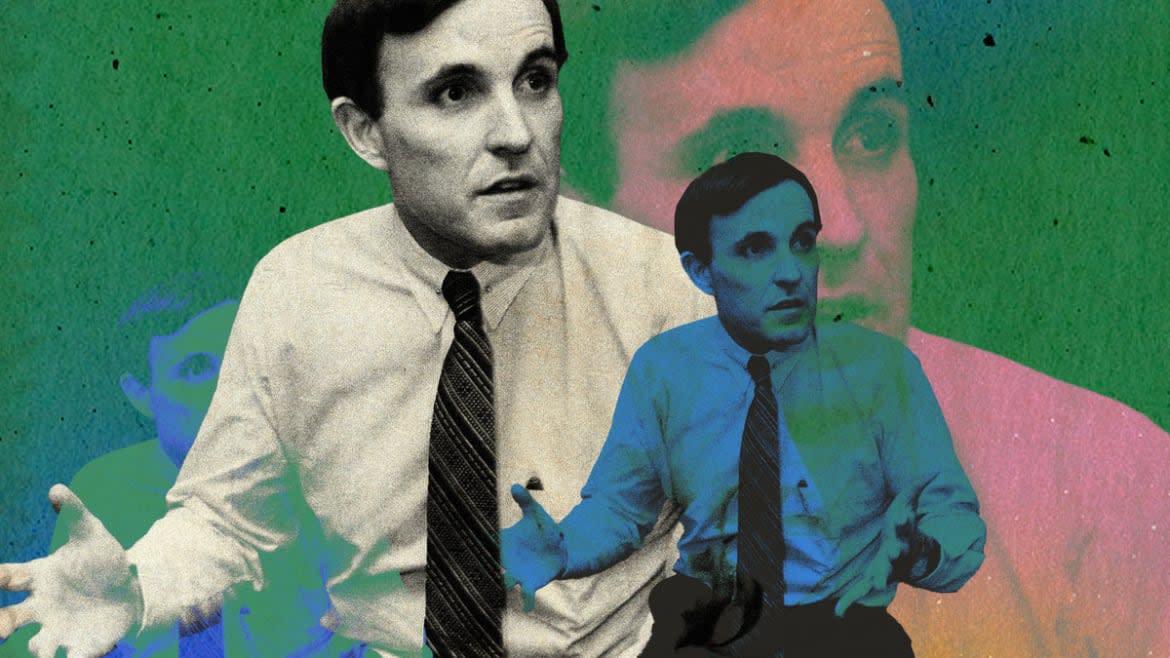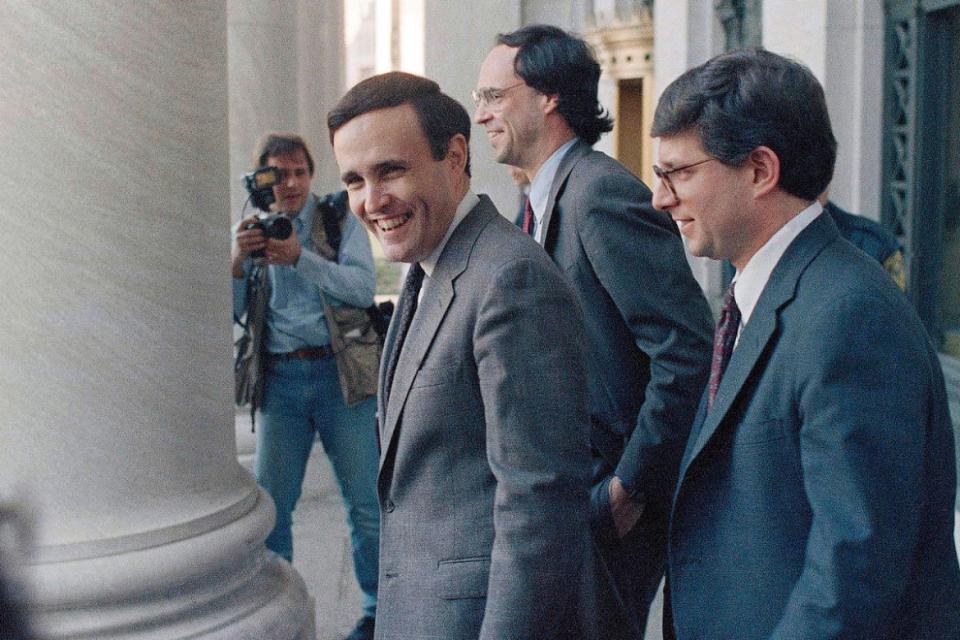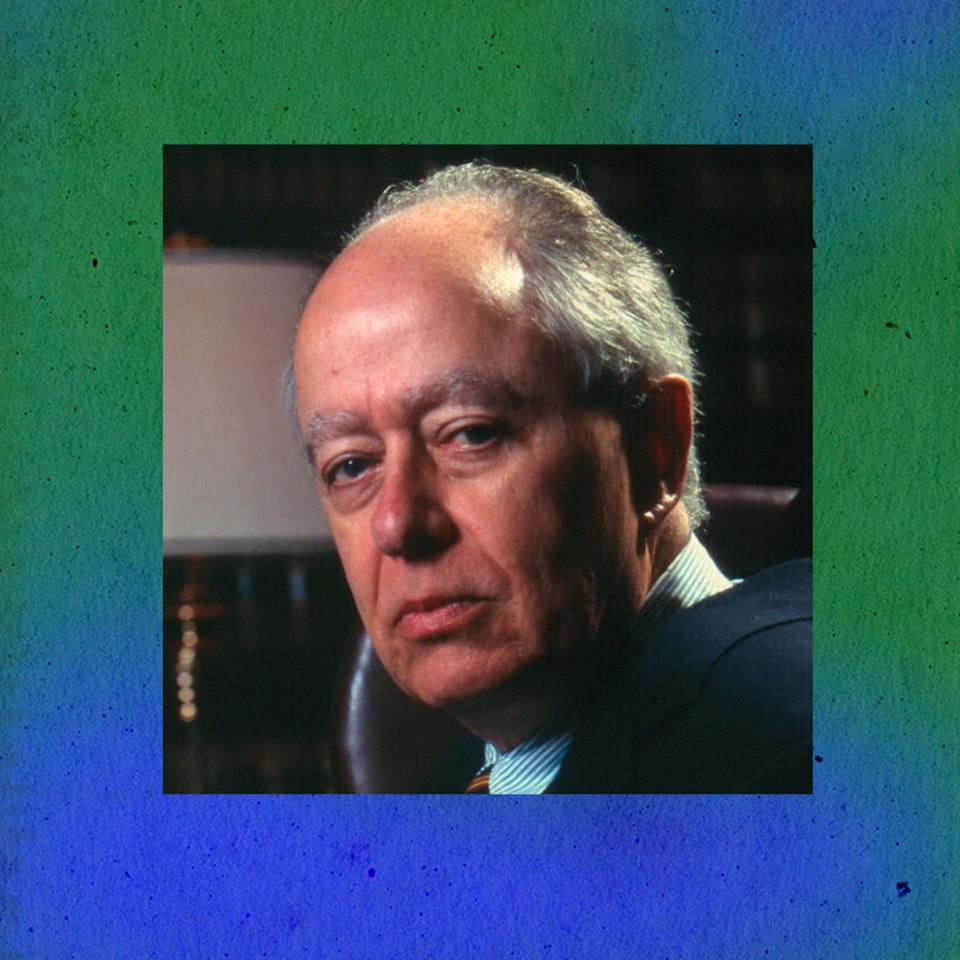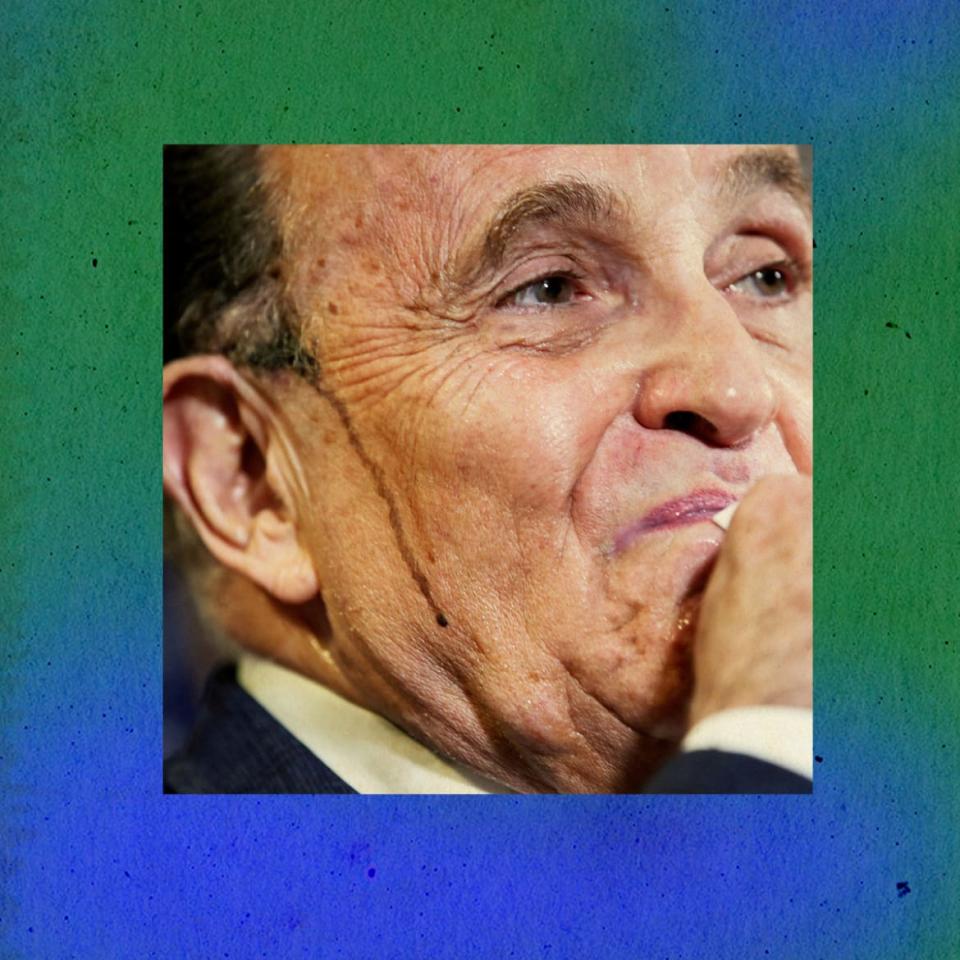Rudy’s RICO Origin Story Is as Fake as His Hair Color

When a Georgia grand jury indicted Rudy Giuliani along with Donald Trump and 17 others this week, the irony that he was charged under the state version of a federal racketeering law was widely noted.
The prosecutor-turned-mayor-turned-MAGA lackey had wielded the Racketeer Influenced and Corrupt Organizations (RICO) statute to become a famous mob-buster. And now he was being accused of violating a similar law in a bungled attempt to overturn an election.
For nearly four decades, Giuliani has claimed that it was his idea to use RICO to prosecute 11 members of New York’s five crime families in 1985—after crime boss Joe Bonanno published a memoir that described the workings of the Mafia.
“I dreamed up the tactic,” Giuliani wrote in his 2002 book Leadership. “I revealed that Bonanno’s description of how families were organized provided a roadmap to precisely what the RICO statute was designed to combat. As soon as I became the U.S. Attorney, I was able to hoist Bonanno by his literary petard.”
But the legal eminence who actually drafted the RICO statute and a former top New York state organized crime prosecutor tell The Daily Beast that is not how it went down at all.
Their version suggests an added irony to the Georgia indictment: the numerous lies that Giuliani is accused of perpetrating to keep Donald Trump in office were superseded by a bogus origin story.
As described in the book Giuliani: The Rise and Tragic Fall of America's Mayor, Ron Goldstock of the New York State Organized Crime Task Force maintains he took the idea of using RICO against La Cosa Nostra to Giuliani two months after he became the U.S. Attorney in Manhattan. Giuliani has denied that, and the conflicting accounts have stood as a he said-he said situation.

Rudy Giuliani in 1986.
But G. Robert Blakey backs up Goldstock’s version of events.
Blakey, a law professor at the University of Notre Dame who has also taught at Cornell University, drafted the Organized Crime Control Act of 1970 on a yellow legal pad. Title IX of the act was RICO.
“Giuliani falsely says he got the idea of using RICO against the mob himself because he read a biography by the head of one of the crime families,” Blakey, 87, told The Daily Beast this week. “That was his story.”
Blakey said that he has not previously challenged Giuliani’s account because what most mattered to him was that RICO had been used with devastating effect against the Mafia.
“Giuliani used it in the commission case,” Blakey said, referring to Giuliani’s prosecution of members of the ruling commission of the five mob families who ran gangland at the time. “If he says he invented it, fine. I don’t care who invented it. If he wants to take credit for it, let him take credit for it.”

G. Robert Blakey
But Blakey’s attitude changed in the wake of the indictment, when he heard that Giuliani had been speaking as if he were the world’s leading expert on the statute.
“When he said, as he’s saying now, as a defendant with Trump, ‘I know more about RICO than anybody,’ I think that stretches the truth,” Blakey told The Daily Beast.
In describing the actual genesis of RICO, Blakey says that his overall legal thinking was influenced by the Nuremberg trials of Nazi war criminals. A more direct factor was a law school analysis he edited on the ultimately failed prosecution of the dozens of gangsters who attended what became known as “the Apalachin Meeting” at a mafioso’s home in upstate New York.
Blakey had that case in mind when he wrote out the ninth subsection of the Organized Crime Control Act in an alcove of his living room in the Maryland house where he lived during a sabbatical from Notre Dame.
The sidewalk was icy on the cold, rainy morning when Blakey arrived at the Senate office building, where he was serving as chief counsel of a committee headed by Sen. John McClellan (D-AK) .
When he met with McClellan, the senator went from one subsection to another, asking if each was essential.
“And I began saying, ‘No, Senator, it’s not, it’s not, it’s not,” Blakey recalled. “And I thought, what the hell is he doing?”
Blakey then realized that McClellan was trying to figure out which bits he could relinquish in political deals. They then came to Title IX.
“He says, ‘Can I trade it?’” Blakey remembered. “And I said, ‘No, sir, this is where you have to fall on your sword. This Title IX, it’s what this statute is all about.’”
McClellan smiled, and RICO made the cut.
On Oct. 15, 1970, the act passed with Title IX. Blakey moved on from Notre Dame to Cornell, where he founded the Cornell Institute on Organized Crime. Goldstock became director and they set about broadening the reach of the RICO principle.
“I said, ‘I’m gonna have to talk to people in the states and see to it that they have statutes comparable to RICO,’” Blakey recalled. “And I did. And there are about 30, among them in Georgia.”

Giuliani’s account of how he came to use RICO against the mob appears to be as fake as his hair color.
Blakey remained a mentor and coach when Goldstock left in 1981 to head New York State’s Organized Crime Task Force. Goldstock says he went to Giuliani in 1983 to detail how he could use RICO in a case against the whole Mafia commission.
When Giuliani claimed credit for dreaming up the biggest Mafia prosecution of all time, Goldstock said little.
“I didn’t need the accolades for it,” Goldstock told The Daily Beast. “I was happy that it was brought.”
The commission case ended with 11 convictions and Goldstock was given a copy of the indictment signed by Giuliani, who would go on to become mayor—and, after 9/11, “America’s Mayor.” Giuliani dreamed aloud of becoming America’s president, but that was not to be. Instead, another New Yorker claimed the White House in 2016.
As Trump took office, Blakey and Goldstock recognized qualities of the mob bosses RICO had put away. “Goldstock and I used to kick around when will we draft a Mafia case against him—whether we could conceptualize Trump becoming the president as a Mafia family taking over a government agency, and then using it to make money for himself,” Blakey said. “And the answer is yes. Trump’s running of the White House was done in behalf of Trump, not you and I.”

Ronald Goldstock
Over the years, Blakey had periodically returned to Georgia to speak to state prosecutors about RICO. One of them, John Floyd, became the state’s leading expert on applying its version. Giuliani and Trump should have gotten a sense of what was to come when Fulton County District Attorney Fani Willis hired Floyd as special assistant district attorney to work on racketeering cases. Floyd reportedly was “very hands on,” during the grand jury presentation of the RICO case against Trump and Giuliani.
Giuliani did not respond to a request for comment regarding the differing accounts of how the first big RICO mob case came to be. But in a sense, Giuliani was right about one thing: He actually might know more than anybody about RICO. After all, who else has been both a mob buster and part of a busted mob?
Get the Daily Beast's biggest scoops and scandals delivered right to your inbox. Sign up now.
Stay informed and gain unlimited access to the Daily Beast's unmatched reporting. Subscribe now.


